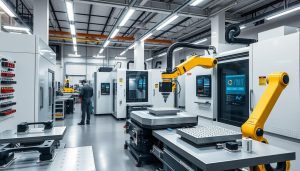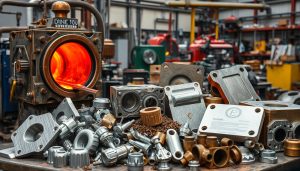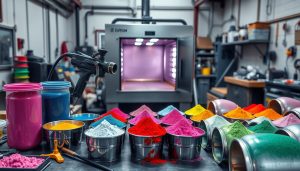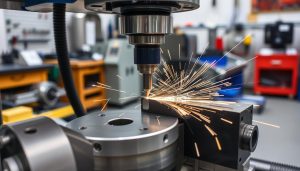Understanding the costs of manufacturing is key to staying profitable and competitive. Die casting is a popular method for shaping metals. But what really affects die casting costs? Learning about die casting cost analysis can help you improve your production plans.
In this detailed article, we’ll look at what makes up die casting costs. We’ll also explore how different factors can affect your expenses. By the end, you’ll know more about die casting costs. This knowledge will help you make better decisions and improve your manufacturing efficiency.
Key Takeaways
- Explore the crucial cost components in die casting, including materials, tooling, and labor.
- Understand the factors that influence die casting costs, such as part complexity, production volume, and secondary operations.
- Discover effective cost estimation methods and practical tips to help you budget accurately for die casting projects.
- Gain insights into optimizing die casting costs and enhancing the profitability of your manufacturing processes.
- Leverage cost analysis to make strategic decisions and stay competitive in the dynamic manufacturing landscape.
Key Cost Components in Die Casting
When looking at die casting cost analysis, it’s key to know what costs the most. The main costs are the materials, the tools needed, and the labor and operations.
Material Costs: Alloys and Consumables
The cost of materials like alloys and consumables is a big part of the cost. Choosing the right alloy is important. It affects the cost because of its density, strength, and how easy it is to work with. Also, things like lubricants and coatings add to the cost.
Tooling and Mold Expenses
Tools and molds are a big expense in die casting. The design, materials, and how they’re made all affect the cost. Keeping them in good shape and replacing them when needed also adds to the cost.
Labor and Operational Costs
Labor and operational costs are also a big deal. This includes the cost of wages, benefits, and overhead. The complexity of the process, the skill of the workers, and how efficient the equipment is all play a part.
| Cost Component | Factors Impacting Costs |
|---|---|
| Material Costs | Alloy selection, consumable expenses |
| Tooling and Mold Expenses | Mold design, manufacturing process, maintenance |
| Labor and Operational Costs | Process complexity, operator skill, equipment efficiency |
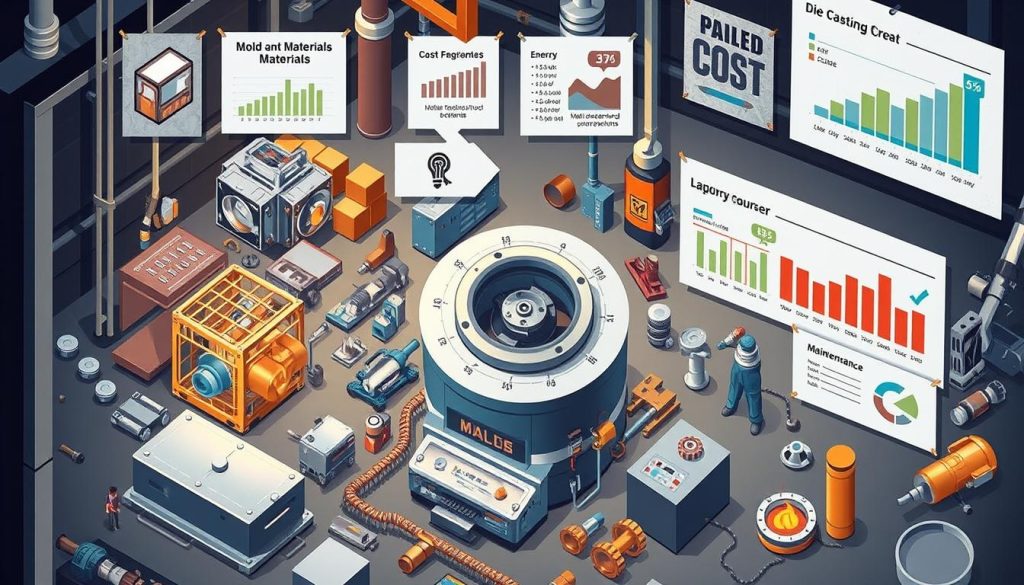
“Understanding the key cost components in die casting is crucial for manufacturers to make informed decisions and effectively manage their production expenses.”
Factors Influencing Die Casting Costs
Die casting costs are influenced by several factors. These include the part’s design complexity, the production volume, and secondary operations. Each factor plays a key role in determining the cost of this manufacturing process.
Part Complexity and Design Specifications
The complexity of the part and its design are major cost drivers. Parts with intricate geometries and tight tolerances require specialized tooling. This increases the cost.
Parts with complex features, like thin walls or unusual shapes, also raise costs. They need specialized equipment and skilled labor.
Production Volume and Batch Size
The production volume and batch size significantly affect costs. Making more parts can lower costs due to economies of scale. This spreads out fixed costs like tooling and setup expenses.
However, making smaller batches can increase costs. This is because of the need for more mold changes and setups.
Secondary Operations: Finishing and Coating
Secondary operations like finishing and coating add to the cost. Processes like deburring and polishing are needed for surface quality. Heat treatment and protective coatings also increase expenses.
Understanding these factors is key for companies looking to optimize their die casting processes. By evaluating part complexity, production volume, and secondary operations, manufacturers can make cost-effective decisions.
| Factor | Impact on Die Casting Costs |
|---|---|
| Part Complexity and Design Specifications | Intricate geometries, tight tolerances, and specialized tooling can increase costs. |
| Production Volume and Batch Size | Higher volumes can lead to economies of scale, while smaller batches may result in higher per-unit costs. |
| Secondary Operations: Finishing and Coating | Processes like deburring, polishing, heat treatment, and protective coatings can add to overall expenses. |
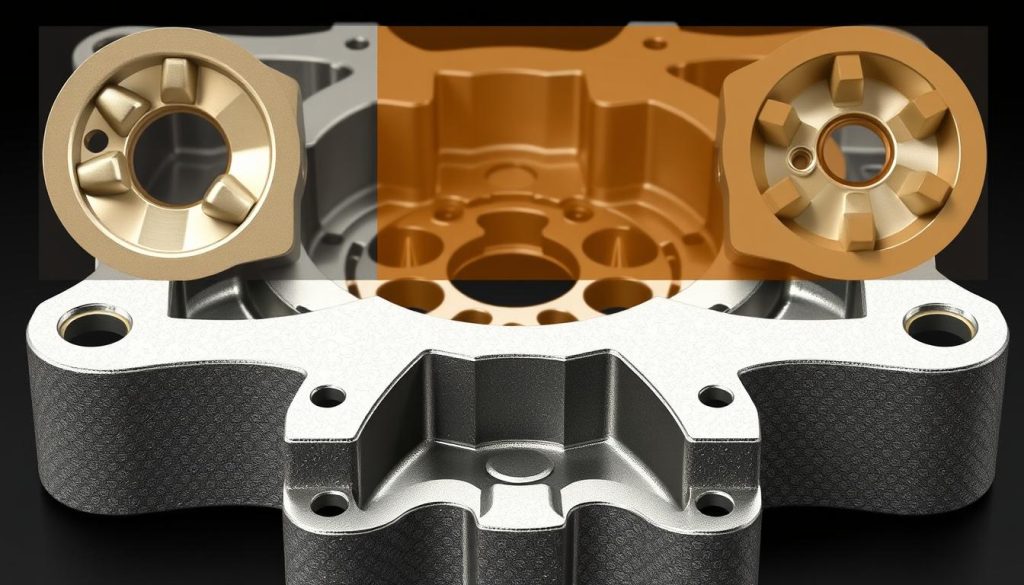
“Carefully evaluating the impact of part complexity, production volume, and secondary operations is crucial for manufacturers to develop cost-effective strategies for their die casting projects.”
Methods for Estimating Die Casting Costs
Getting the cost right for die casting is key to keeping prices competitive and making a profit. In the die casting world, formulas and software tools help figure out costs accurately.
Cost Estimation Formulas and Tools
Die casting costs depend on many things like material, tooling, labor, and overhead. Companies use formulas like the die casting cost breakdown to estimate costs. They also use software for detailed analysis and predictions, helping make better choices.
Practical Tips for Accurate Budgeting
To budget accurately for die casting, consider material, tooling, and how to make production better. By looking at these factors, companies can make good cost estimates and stay ahead in the market. It’s important to keep updating cost estimation methods to stay profitable in die casting.

